Let Fury Have the Hour
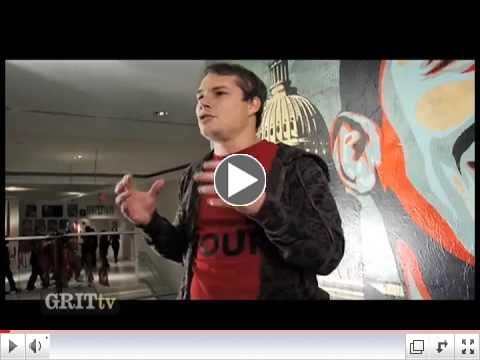 | | Let Fury Have the Hour |
Trailer for a new film by Antonio D'Ambrosio on how capitalism in crisis has effected everything
|
Visit Our New 'Online University of the Left' and Be Amazed!

Check out the various departments, study guides and archives
|
Dialogue & Initiative 2012 The new annual edition of our journal of discussion and analysis is now out. More than 130 pages, it includes 13 articles related to the Occupy! movement, as well as seven others vital to study in this election year. Cost is $10 plus shipping. Or get one by becoming a new member or sustainer. Click the title to buy it directly.
|
Blog of the Week:
|
Lost Writings of SDS..
Revolutionary Youth the the New Working Class: The Praxis Papers, the Port Authority Statement, the RYM Documents and other Lost Writings of SDS
Edited by Carl Davidson 
Changemaker, 273pp, $22.50
For the full contents, click the link and view 'Preview' under the cover graphic.
|
|
By Randy Shannon, CCDS

"Everyone has the right to work, to free of employment, to just and favorable conditions of work and to protection against unemployment."
- United Nations Universal Declaration of Human Rights, December 10, 1948
I. Introduction
The "Great Recession" that began in 2007 has caused the greatest percent of job losses since the Great Depression of 1929. This crisis is the end of an era of unrestrained 'neo-liberal' capitalism that became public policy during the Reagan administration. The crisis marks a new level of instability with the growth of a global financial elite that targeted US workers and our trade unions after World War II.
|
|
Order Our
Full Employment Booklets
 |
...In a new and updated 2nd Edition
Capitalism may well collapse under its own excesses, but what would one propose to replace it? Margaret Thatcher's mantra was TINA...There Is No Alternative. David Schweickart's vision of "Economic Democracy" proposes a serious alternative. Even more fundamentally, it opens the door to thinking about alternatives. His may or may not turn out to be the definitive "successor system," but he is a leader in breaking out of the box. |
|
Quick Links...
CCDS Discussion |
Sex and the Automobile in the Jazz Age
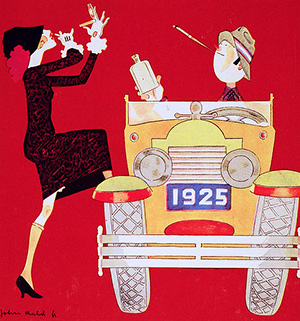
By Peter Ling in History Today: 'Brothels on wheels' thundered the moralists but Peter Ling argues the advent of mass motoring in the 1920s was only one of the changes in social and group relationships that made easier the pursuit of carnal desire.
|
 A Memoir of the 1960s by Paul KrehbielAutumn Leaf Press, $25.64 A Memoir of the 1960s by Paul KrehbielAutumn Leaf Press, $25.64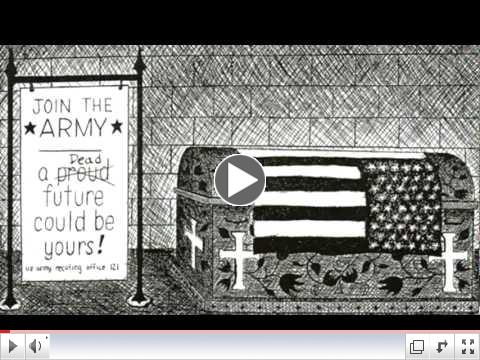 | | Shades of Justice Video: Bringing Down a President, Ending a War |
|
Carl Davidson's Latest Book:
New Paths to Socialism

Essays on Mondragon, Marx, Gramsci and the Green and Solidarity Economies |
Solidarity Economy:What It's All About

Edited by Jenna Allard, Carl Davidson and Julie Matthaei
Buy it here...
|
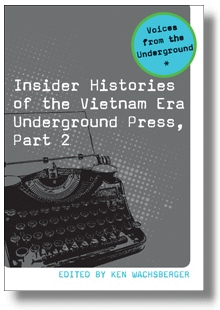
Voices from the Underground Press of the 1960s, Part 2- Foreword by Susan Brownmiller
- Preface by Ken Wachsberger
$37.50 + $6 shipping
|
|
|
|
An Invitation to CCDSers and Friends...
 Weather, Climate Change & Politics
We're the Committees of Correspondence for Democracy and Socialism...Do you have friends who should see this? Pass it on...Do you have a blog of your own? Others you love to read every day? Well, this is a place where you can share access to them with the rest of your comrades. Just pick your greatest hits for the week and send them to us at carld717@gmail.com!
Most of all, it's urgent that you oppose austerity, make solidarity with the Occupy! movement and end the wars! We're doing more than ever, and have big plans. So pay your dues, make a donation and become a sustainer. Do it Now! Check the link at the bottom...
|
Did Climate Change 'Cause' the Colorado Wildfires?

By David Roberts
Grist Magazine
The wildfires raging through Colorado and the West are unbelievable. As of yesterday there were 242 fires burning, according to the National Interagency Fire Center. Almost 350 homes have been destroyed in Colorado Springs, where 36,000 people have been evacuated from their homes. President Obama is visiting today to assess the devastation for himself.
Obviously the priority is containing the fires and protecting people. But inevitably the question is going to come up: Did climate change "cause" the fires? Regular readers know that this question drives me a little nuts. Pardon the long post, but I want to try to tackle this causation question once and for all.
What caused the Colorado Springs fire? Well, it was probably a careless toss of a cigarette butt, or someone burning leaves in their backyard, or a campfire that wasn't properly doused. [UPDATE: Turns out it was lightning.] That spark, wherever it came from, is what triggered the cascading series of events we call "a fire." It was what philosophers call the proximate cause, the most immediate, the closest.
All the other factors being discussed - the intense drought covering the state, the dead trees left behind by bark beetles, the high winds - are distal causes. Distal causes are less tightly connected to their effects. The dead trees didn't make any particular fire inevitable; there can be no fire without a spark. What they did is make it more likely that a fire would occur. Distal causes are like that: probabilistic. Nonetheless, our intuitions tell us that distal causes are in many ways more satisfactory explanations. They tell us something about the meaning of events, not just the mechanisms, which is why they're also called "ultimate" causes. It's meaning we usually want....(Click title for more)
|
|
There is No Substitute for Organizing:
How Unions Might Help Win Future Battles

By Bill Fletcher, Jr. and Jane McAlevey
The Nation
July 6, 2012 - Before Wisconsinites voted down the attempt to recall Governor Scott Walker, and certainly since, principled progressives inside and outside of unions have disagreed on whether or not the campaign should have happened. In fact, between the two of us, we don't fully agree about whether or not the recall was the correct tactic.
But with the defeat in the rear view mirror, two clear lessons can be drawn from Wisconsin: unions need to reinvest in mass participatory education-sometimes called internal organizing in union lingo; and, unions need to stop focusing on "collective bargaining" and actually kick down the walls separating workplace and non-workplace issues by going all-out on the broader agenda of the working class and the poor.
Once you get past the reports that Walker outspent the Wisconsin workers by 7:1, the next most startling fact is that 38 percent of union households voted to keep the anti-worker Governor. That's slightly more than one third, and had the pro-recall forces held the union households, Walker would no longer be Governor. With major media outlets drubbing us with the 38 percent number, the liberal political elite seem stuck on a rhetorical question: why do poor people and workers vote against their material self-interest? Actually, in our own experience, the poor and working class don't vote against their self-interest-but there's a precondition: we have to create the space for ordinary people to better understand what their self-interest is, and how it connects with hundreds of millions in the US and globally.
Participatory education can best be carried out within unions through an on-going organizing program. We know from years of experimenting that adults learn best through taking direct action. Actions themselves are often transformative. And how to calibrate the learning and action dialectical is the work of good organizers-paid and unpaid. But today's unions have all but abandoned organizers, educators, organizing and radical, participatory education. Why?
First off, many union leaders, despite their rhetoric, do not believe in the critical importance of worker education. Instead they believe in "PowerPoint." They invest truckloads of money into pollsters who perfect their quick and fancy presentations with graphics which all too often aim to dazzle rather than educate. They believe that worker education cannot be quantified and does not necessarily translate into a specific, tangible outcome, thereby making it worthless.
A second reason for the anemic internal education is the legacy of the Cold War and McCarthyism. "Big Picture" education that truly examines the roots of the current economic crisis and the nearly forty year decline in the living standards of the average US worker leads to a fundamental critique of capitalism. This conclusion scares many leaders who fear being red-baited, or may even harbor a fantasy that that they will at some point be re-invited to the ruling circles of the USA....(Click title for more)
|
Think Piece: A Struggle for Self-Determination, Participatory Democracy, and Economic Justice

By Kali Akuno
For the Malcolm X Grassroots Movement
July 4, 2012 - A major progressive initiative is underway in Jackson, Mississippi. This initiative demonstrates tremendous promise and potential in making a major contribution towards improving the overall quality of life of the people of Jackson, Mississippi, particularly people of African descent. This initiative is the Jackson Plan and it is being spearheaded by the Malcolm X Grassroots Movement (MXGM) and the Jackson People's Assembly.
The Jackson Plan is an initiative to apply many of the best practices in the promotion of participatory democracy, solidarity economy, and sustainable development and combine them with progressive community organizing and electoral politics. The objectives of the Jackson Plan are to deepen democracy in Mississippi and to build a vibrant, people centered solidarity economy in Jackson and throughout the state of Mississippi that empowers Black and other oppressed peoples in the state.
The Jackson Plan has many local, national and international antecedents, but it is fundamentally the brain child of the Jackson People's Assembly. The Jackson People's Assembly is the product of the Mississippi Disaster Relief Coalition (MSDRC) that was spearheaded by MXGM in 2005 in the wake of Hurricane Katrina's devastation of Gulf Coast communities in Mississippi, Louisiana, Alabama and Texas. Between 2006 and 2008, this coalition expanded and transformed itself into the Jackson People's Assembly. In 2009, MXGM and the People's Assembly were able to elect human rights lawyer and MXGM co-founder Chokwe Lumumba to the Jackson City Council representing Ward 2.
What follows is a brief presentation of the Jackson Plan as an initiative to build a base of autonomous power in Jackson that can serve as a catalyst for the attainment of Black self-determination and the democratic transformation of the economy.
Program or Pillars
The J - K Plan has three fundamental programmatic components that are designed to build a mass base with the political clarity, organizational capacity, and material self-sufficiency to advance core objectives of the plan. The three fundamental programmatic components are:
Building People's Assemblies Building a Network of Progressive Political Candidates Building a broad based Solidarity Economy
People's Assemblies
The People's Assemblies that MXGM are working to build in Jackson and throughout the state of Mississippi are designed to be vehicles of Black self-determination and autonomous political authority of the oppressed peoples' and communities in Jackson. The Assemblies are organized as expressions of participatory or direct democracy, wherein there is guided facilitation and agenda setting provided by the committees that compose the People's Task Force, but no preordained hierarchy. The People's Task Force is the working or executing body of the Assembly. The Task Force is composed of committees that are organized around proposals emerging from the Assembly to carry out various tasks and initiatives, such as organizing campaigns and long-term institution building and development work....(Click title for more)
|
TED on Injustice: 23 Minutes of Eloquent Wisdom
 | | Bryan Stevenson: We need to talk about an injustice |
|
West Bank Diaries: The Separation Is Total

In May, the author spent ten days traveling around Israel, Palestine and Jordan with the liberal pro-Israel advocacy organization J Street. What follows are excerpts from the journal she kept during her trip.
By Marilyn Katz
In These Times
Impression: The separation is total. Despite the 3 million Palestinians living in the West Bank, it is totally possible for Israelis never to encounter Palestinians and for Palestinians never to encounter Israelis, except at checkpoints.
Day 1: May 3, 2012
We leave Tel Aviv, a sun-drenched city filled with beaches, high rises and casually-dressed Israelis, on the only road across the West Bank to Jerusalem. It's a slick highway surrounded on all sides by a "fence" - in some places cement and in other places barbed wire, dotted with armed checkpoints. On the side of the road, Palestinian men walk through a narrow barbed wire pathway, some carrying bags, others carrying furniture. The road, I'm told, is for Israeli citizens only-those Palestinians who have permission to work in Israel must park their vehicles elsewhere, pass through a check point and board buses that exit the road shortly thereafter.
What is the purpose of this fencing? The ostensible reason-security-is less than convincing. The fences are made of barbed wire; anyone wishing to damage a road or a village could easily shoot over or through it, or simply take the risk of being cut. My guides estimate that thousands of Palestinians "penetrate" these fences to reach Israel each day. More than anything it appears that these fences are cages, locking people in, restricting their movement and ultimately making them prisoners in their own land.
On to Jerusalem. When I was here 10 years ago, I saw many Palestinians working throughout the city. Today, I am struck not only by the absence of Palestinians and Israeli Arabs, but by the massive numbers of Haredi and other Ultra-Orthodox Jews. With an average of eight children per family, the Haredi and other Ultra-Orthodox Jews are the fastest growing segment of the Israeli population, and they are a huge factor in Israeli politics and a huge drain on the economy and political life. Some of the Ultra-Orthodox, particularly the Haredi men, do not work and have been exempted from military service so that they can "study." They all receive a government stipend for each child born. Due to their growing numbers, they have a big influence in the parliament and in the military.
Impression: The separation is total. Despite the 3 million Palestinians living in the West Bank, it is totally possible for Israelis never to encounter Palestinians and for Palestinians never to encounter Israelis, except at checkpoints.
Day 2: May 4, 2012
Just returned from a day in the West Bank. Since the 1993 Oslo Accords (which were meant to be only an interim step), the West Bank has been divided into three areas: "Area A" (large cities under the full control of the Palestinian Authority), "Area B" (smaller cities and villages supposedly under Palestinian civil authority and Israel Defense Forces (IDF) military authority), and "Area C" (the rest of the West Bank, which includes farms, villages, and individual houses the Israelis claim to be uninhabited, and which is under the complete control of the IDF)....(Click title for more)
|
Dems Attacking the Progressive Incumbent

U.S. Rep. Raśl Grijalva, a leader of the Congressional Progressive Caucus and Progressive Democrats of America, hadn't faced Democratic challengers since he was elected to Congress. Well, he's facing two this year.
By Mari Herreras
Tusson Weekly
June 26, 2012 - In the 2010 general election, Democrat Raśl Grijalva faced Tea Party Republican Ruth McClung-a newcomer to the political scene-and he came surprisingly close to losing the congressional seat he's held since first being elected in 2002.
The Tea Party battle cry is a bit muffled these days, but in the new Congressional District 3, Grijalva is now seeing opposition from within his own party. This year, for the first time since becoming a congressman, he's facing Democratic challengers in the congressional primary: Amanda Aguirre and Juan Manuel Arreguin.
Aguirre, a longtime Yuma Democrat who spent seven years in the state Legislature, remembers her last state Senate campaign, which she lost to a Tea Party challenger in what she describes as a post-SB 1070 fight. The state Republican Party poured more than $200,000 into the campaign to defeat her, she said-and it worked.
Then there's Arreguin, an OB-GYN who works for El Rio Community Health Center. He is a political newcomer who has lived in Tucson for 20 years. He doesn't even live in the district whose seat he is running for, and he was, until recently, a Republican.
Some pundits claim that Grijalva has nothing to worry about in the primary or the general election, where he will likely face Republican Gabriela Saucedo Mercer. However, when the Tucson Weekly interviewed Arreguin and Aguirre, both candidates said Grijalva should be worried, citing U.S. Rep. Silvestre Reyes' defeat in Texas as an example of what can happen to a longtime congressional incumbent if the right challenger comes along.
Reyes lost his bid for a ninth term when he was defeated in a May primary by fellow Democrat Beto O'Rourke by 6 percentage points. O'Rourke cast Reyes as someone who had been in office too long, didn't care about his constituents and had ethical issues.
But are Arreguin and Aguirre the right challengers? I talked with all of the Democratic candidates, and while the congressman anticipates a fight, he's better prepared than he was in previous election seasons, and has raised far, far more money than his challengers at the start of the race. As of the March 31 campaign-finance reports, Grijalva had raised almost $426,000, while Aguirre had raised about $31,000, and Arreguin had not even broke the $12,000 barrier.
If the other candidates have a unique strategy in their pockets, they aren't revealing it. Instead, their strategy is more of the same: Call out Grijalva for his ill-advised post-SB 1070 boycott of the state, and attempt to paint him as someone incapable of compromise with the Republican majority....(Click title for more)
|
Film Review: The Invisible War

A True Story of the Rape of Women in the Military
By Annlee Ellingson
Paste Magazine
The Oscar- and Emmy-winning documentarian behind This Film Is Not Yet Rated turns his lens on one of the United States military's most shameful and best-kept secrets: rape. According to data reported in the film and sourced from the Department of Defense, more than 20 percent of all servicewomen have been assaulted while serving, and a half a million people-women and men-have been sexually assaulted in the U.S. military. That's a rampant problem that flares in the public consciousness every so often-remember the Tailhook scandal?-but otherwise goes largely unreported.
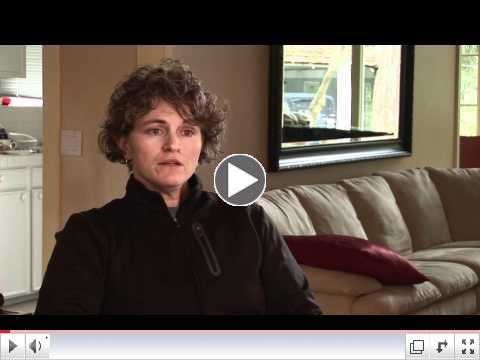 | | THE INVISIBLE WAR - Sundance Trailer (12/01) |
And as writer-director Kirby Dick makes clear in The Invisible War, for these women, rape isn't even the worst of it. One of the featured subjects, U.S. Coast Guard Seaman Kori Cioca, is still suffering the effects of a broken jaw five years after her commanding officer assaulted her. The women are victims of men they considered their friends, and their commanding officers to whom they would report the incidents are in many cases either pals of the perpetrators or the perpetrators themselves. Moreover, the military is both ill-equipped and uninterested in prosecuting rape cases: Victims are told to "suck it up" and that sexual assault is an "occupational hazard." If they still choose to report, they may find themselves charged with a crime and discharged from duty.
If this enrages you, it should. Dick deftly plucks all the right heartstrings to make sure it does with expertly edited sequences by Douglas Blush, which demonstrate how alike all of these women's stories are. Uniformly, they were idealistic when they enlisted: They were from proud military families or they sought exciting careers or they wanted to see the world. But even these initial interviews are tinged with sadness, as one by one they reveal brutal betrayal by men who were supposed to be their brothers in arms.
While producer Amy Ziering's probing interviews with the film's subjects are emotional and moving, Dick further elicits viewer empathy by following a select few home. It's hard to deny the impact of post-traumatic stress disorder when confronted with Cioca's pile of prescription medications or U.S. Navy Seaman Trina McDonald's darting eyes when she ventures into public with her family. PTSD is higher among military women who are raped than men who see combat....(Click title for more)
|
Sartre vs Camus: An Intellectual Boxing Match
 Review: A fascinating and entertaining new book explores the fractious relationship between two of the twentieth century's most compelling intellects. Review: A fascinating and entertaining new book explores the fractious relationship between two of the twentieth century's most compelling intellects.
By Tim Black
Spiked Review of Books
The Boxer and the Goalkeeper: Sartre Vs Camus. The title of a new book by Andy Martin, a dude-like don from Cambridge University, isn't that promising.
Neither is the subtitle: 'They should have been a dream team. It turned into a duel to the death.' And the cover, just to ram home the gimmicky, 'prize bout' theme, is mocked up like a 1950s boxing promotion.
Thankfully, The Boxer is not as naff as it sounds. In fact, Martin has produced a rather lovely, sometimes playful, sometimes moving and often very droll take on the life, loves and, yes, thought of two of the twentieth century's most compelling intellects. The combative element is there, of course.
And Martin certainly has fun pitting the two writers and thinkers against one another. Their 'binary antagonisms' seem to proliferate under Martin's gaze: Jean-Paul Sartre the thinker versus Albert Camus the man of action; the lover of the symbolic versus the savage lover; the prolix writer versus the minimal stylist; and, of course, the ugly versus the beautiful.
Lest we forget, Camus, eight years Sartre's junior, was blessed with good looks. A young Humphrey Bogart, reckons Martin. Sartre, meanwhile, looked like 'something hanging off the side of Notre Dame'....(Click title for more)
|
|
Become a CCDS member today!
 The
time is long past for 'Lone Rangers'. Being a socialist by your self is
no fun and doesn't help much. Join CCDS today--$36 regular, $48
household and $18 youth. The
time is long past for 'Lone Rangers'. Being a socialist by your self is
no fun and doesn't help much. Join CCDS today--$36 regular, $48
household and $18 youth.
Better yet, beome a sustainer at $20 per month,
and we'll send you a copy of Jack O'Dell's new book, 'Climbing Jacobs
Ladder,' drawing on the lessons of the movement in the South in the
1950s and 1960s.
Solidarity, Carl Davidson, CCDS |
|
|